These sunny Meyer lemon bars are a bright and sweet take on the classic lemon bars, using Meyer lemons, a sweeter citrus than typical lemons.
Jump to Recipe
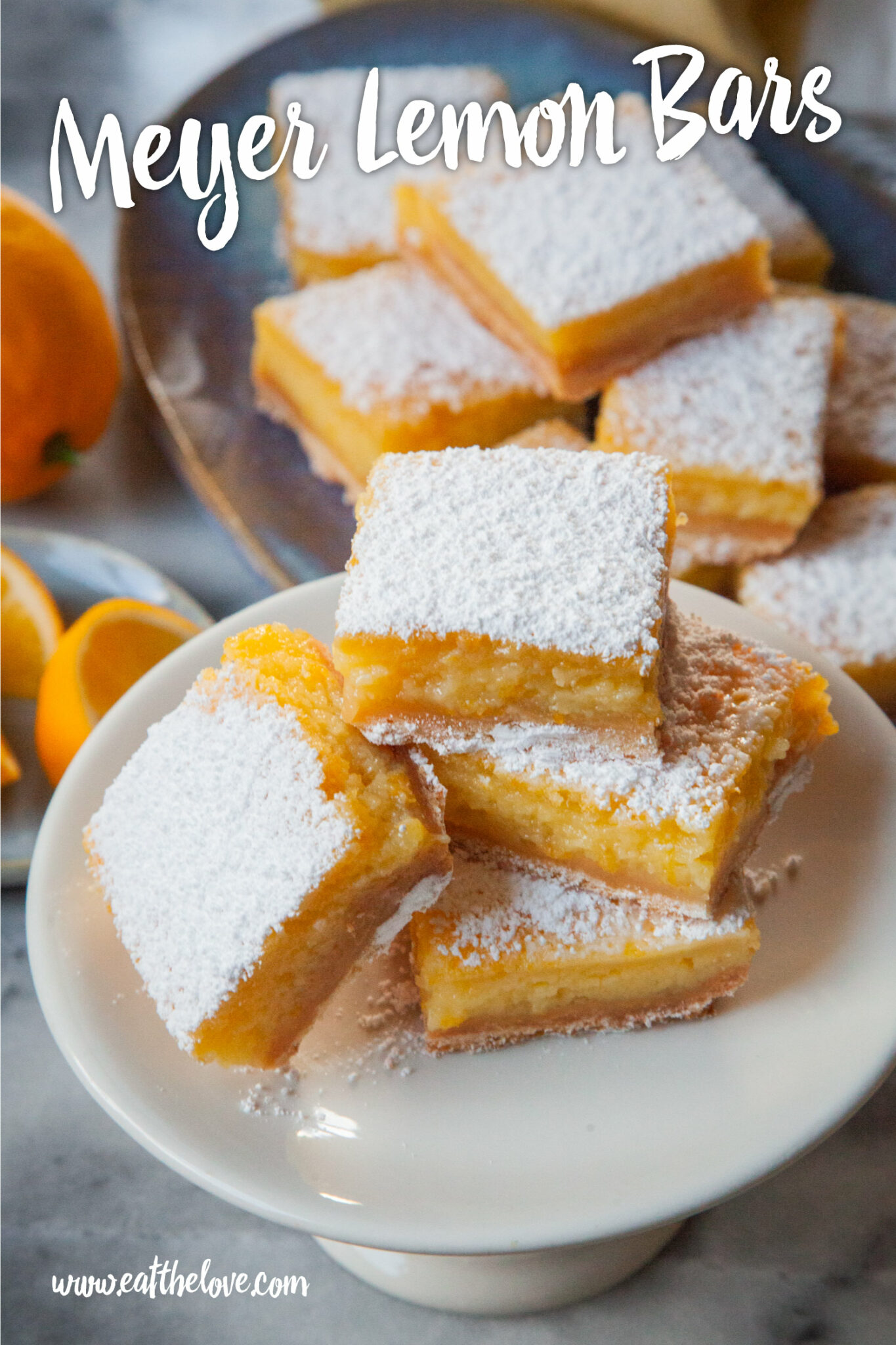
There’s that cliché saying “When life gives you lemons…make lemonade” but for me, I make lemon bars! And though I often make lemon bars with regular lemons (they work just as well in this recipe) my brother happens to have a super prolific Meyer lemon tree in his backyard and surprised me with 15 pounds of Meyer lemons.
So I’ve been making a lot of things with Meyer lemons, like my Meyer Lemon Shaker Tart with Strawberry and Rhubarb, Meyer lemon and Matcha Green tea Bundt Cake, and a Meyer Lemon and Chocolate Bundt Cake. But my favorite recipe might be these Meyer lemon bars, which I might like better than typical lemon bars? (<- It’s a toss up) They have a sturdy shortbread crust that complement the tart sweet lemony filling on top. I’m slightly obsessed with them, so there may be another batch or three in my near future…
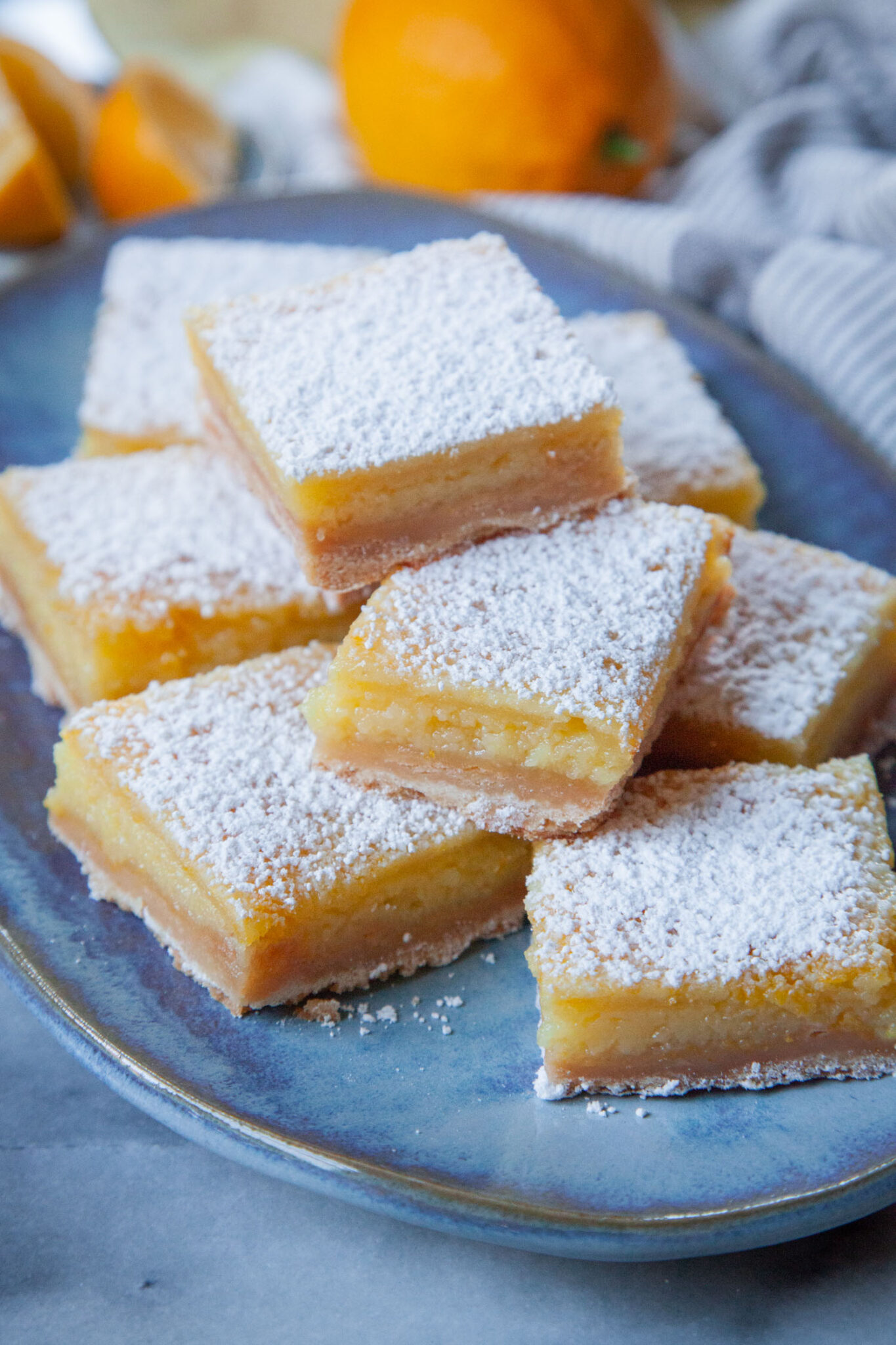
How do you make these?
Making Meyer lemon bars is pretty easy. But it does require that you plan slightly ahead, as the bars do need to cool completely and chill before serving.
Make the crust by combining butter, flour, powdered sugar and a little bit of salt. Mix until a dough forms and then pretty it down into the bottom of a pan. Prick all over with a fork, cover with parchment paper and weights, and then bake until golden brown, removing the paper and weights about 5 to 10 minutes before the crust is done.
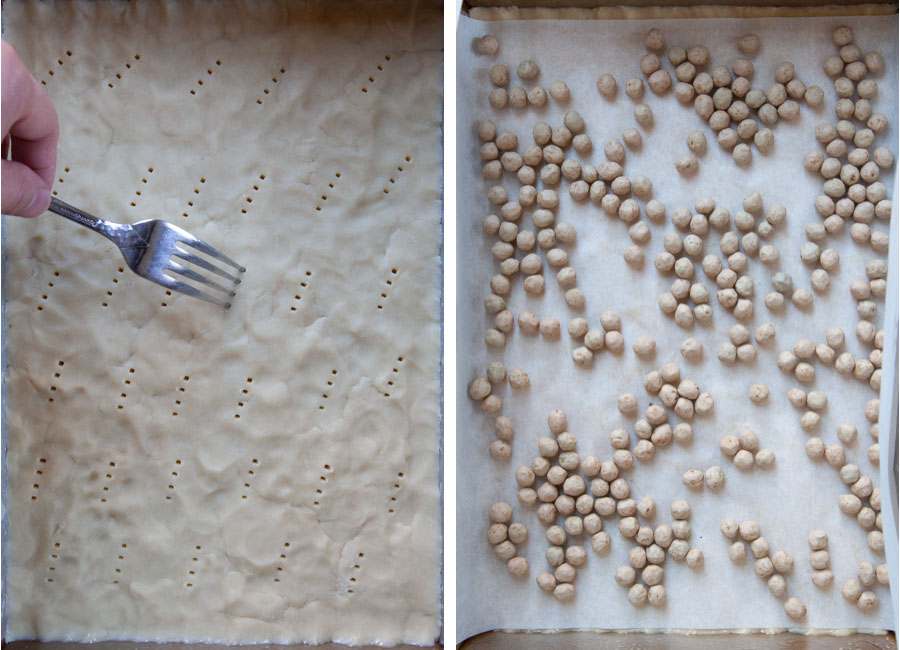
While the crust is baking, make the filling by combining the sugar and Meyer lemon zest in a food processor. Process until the sugar and lemon is combined. In a medium bowl (preferably one with a spout) whisk eggs and a little bit of salt together until blended. Add flour, the lemon sugar, and Meyer lemon juice to it. Whisk and stir until the flour and sugar are dissolved.
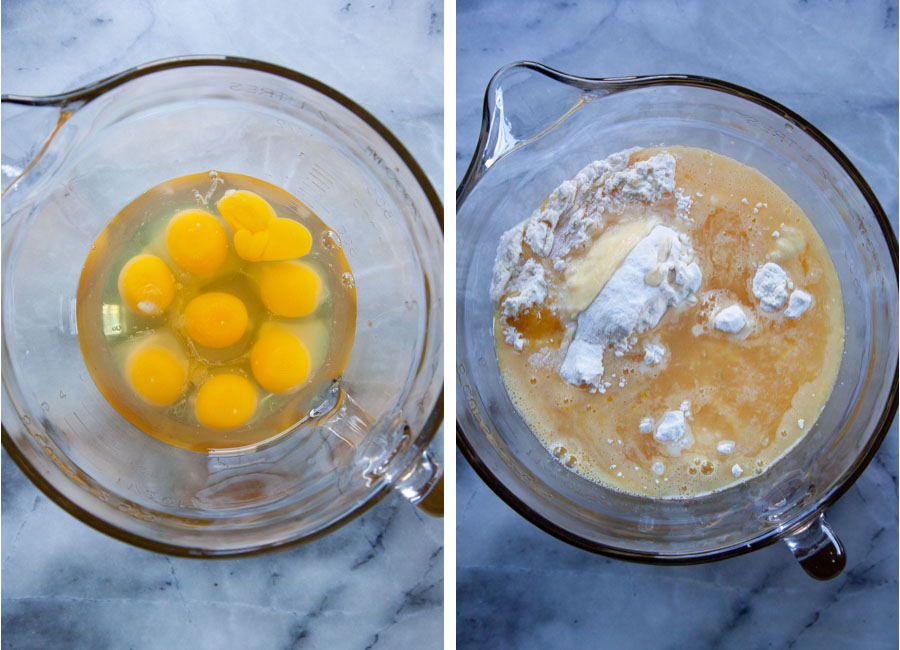
Once the crust is done baking, pour the filling into the hot pan, and then continue to bake until the filling it set, and the center of the pan has stopped “jiggling” when shaken. Let cool until it reaches room temperature, the cover and move to the refrigerator for at least two hours, or preferably overnight.
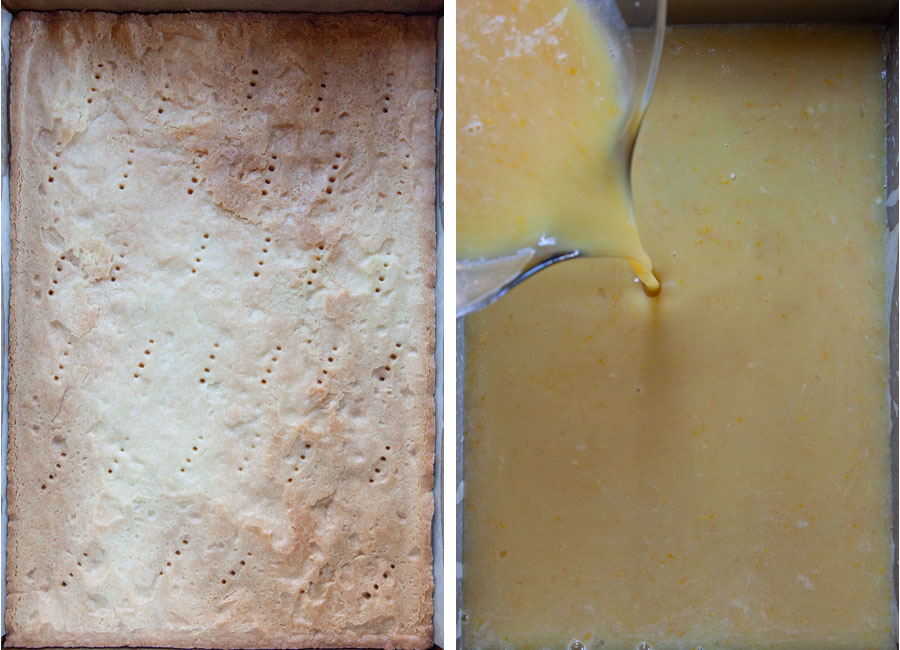
What’s a Meyer lemon and what’s the difference between Meyer and regular lemons?
Meyer lemons are type of citrus that is a cross between a citron and a mandarin/pomelo hybrid. They are sweeter than traditional lemons but less sweet than an orange. They also have an acidity between the two, being more acidic than an orange, and less acidic than a lemon.
The Meyer lemon looks pretty similar to a regular lemon, with a yellow skin, though as they age a bit, they tend to turn more orange-yellow, deepening in color. However, they have a smoother skin than a traditional lemon that tends to be a little more pitted and have a texture. Regular lemons come in different shapes, but most grocery store lemons (most varieties are Eureka or Lisbon) are longer, with a bit of a “tale” on one end, while Meyer lemons are rounded and look plumper in shape.
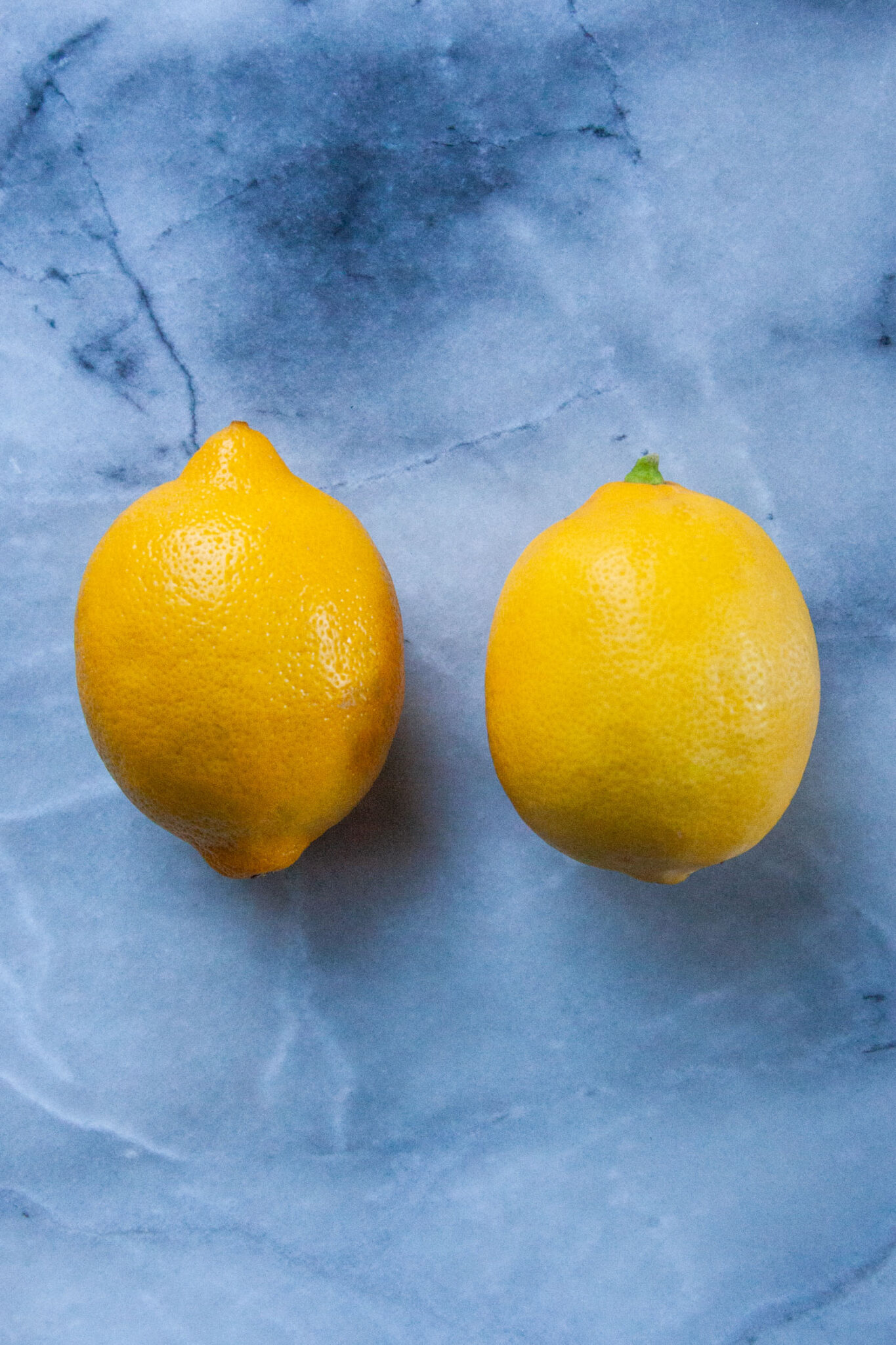
The Meyer lemon also has a much thinner, more tender pith (the white part of the lemon, right under the yellow skin). Because of this, if you’re making a Meyer lemon shaker tart, you don’t need to macerate the Meyer lemon slices as long as you might with a traditional lemon shaker tart.
Like all citrus, the zest of the Meyer lemon is intensely fragrant and packed with flavor. This is why I first process the Meyer lemon zest with the sugar in a food processor. You can skip this step if you want, adding the zest into the filling along with sugar, or even skipping the zest all together if you want a smoother filling, though the zest definitely adds more punch to the flavor.

Can you use different citrus?
Yes. This is a flexible base recipe that you can use to swap out for different citrus. Keep in mind that regular lemons and limes are more acidic, so they will have a sharper flavor. The grapefruit and pomelo tend to be more bitter, and might require more sugar to balance the bar, and oranges are already very sweet. I don’t recommend removing sugar when using a sweeter citrus fruit like oranges though. The sugar is important to making sure the filling sets properly.
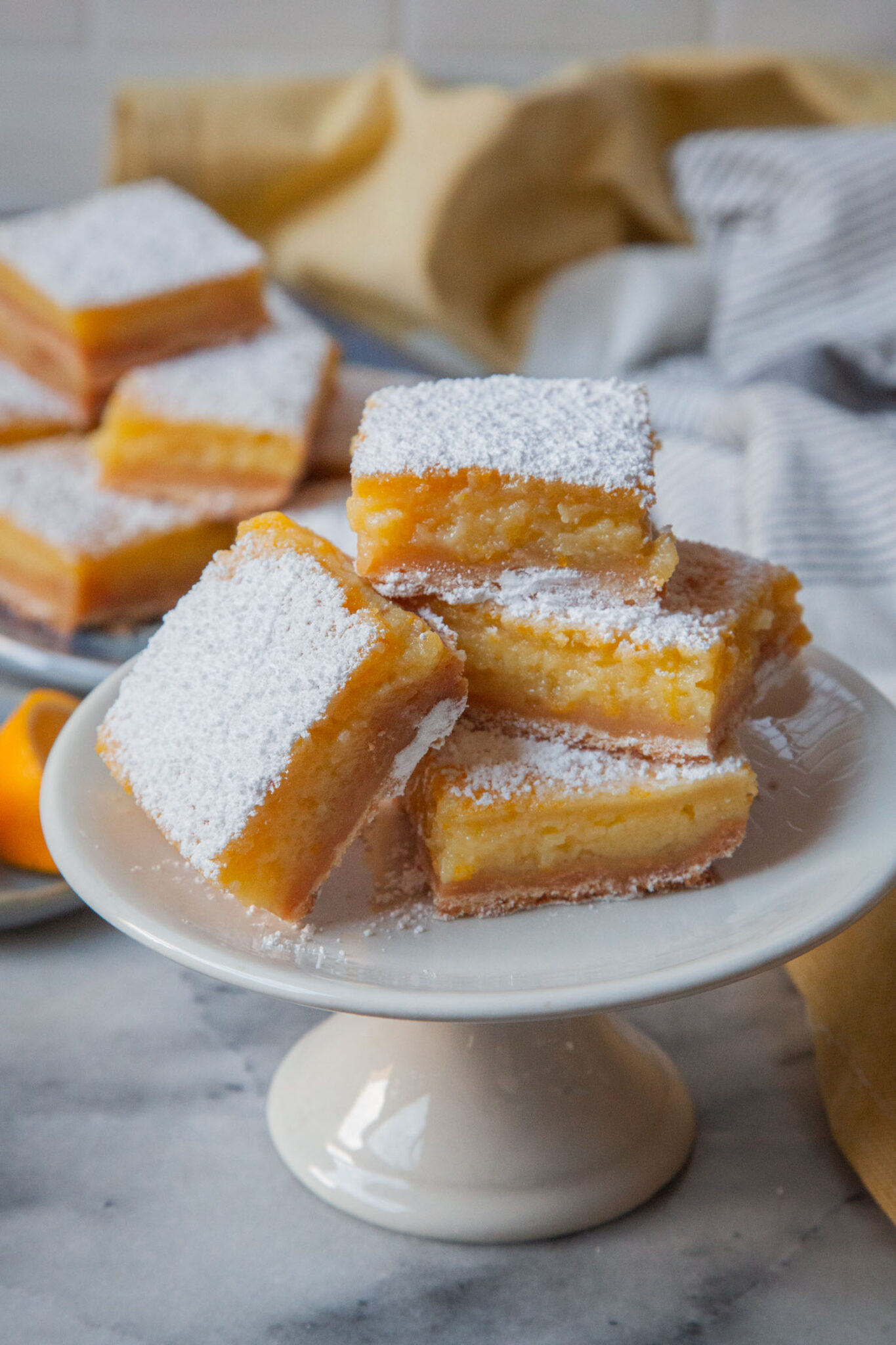
What’s the best way to cut lemon bars?
Lemon bars tend to be a bit sticky. My advice to get super clean lines when cutting lemon bars is to make sure the bars are chilled thoroughly when cutting them and using a very sharp, warm and wet knife. Run the chef knife under hot water, then carefully shake it off, but don’t dry it. Make a cut into the bars, then run the knife under the water again, wiping off any lemon bar filling residue sticking to the knife. There’s no need to soap and scrub the knife, just wipe the lemon gunk off with a damp paper towel. Shake the knife and cut again. Repeat until all the lemon bars are cut.
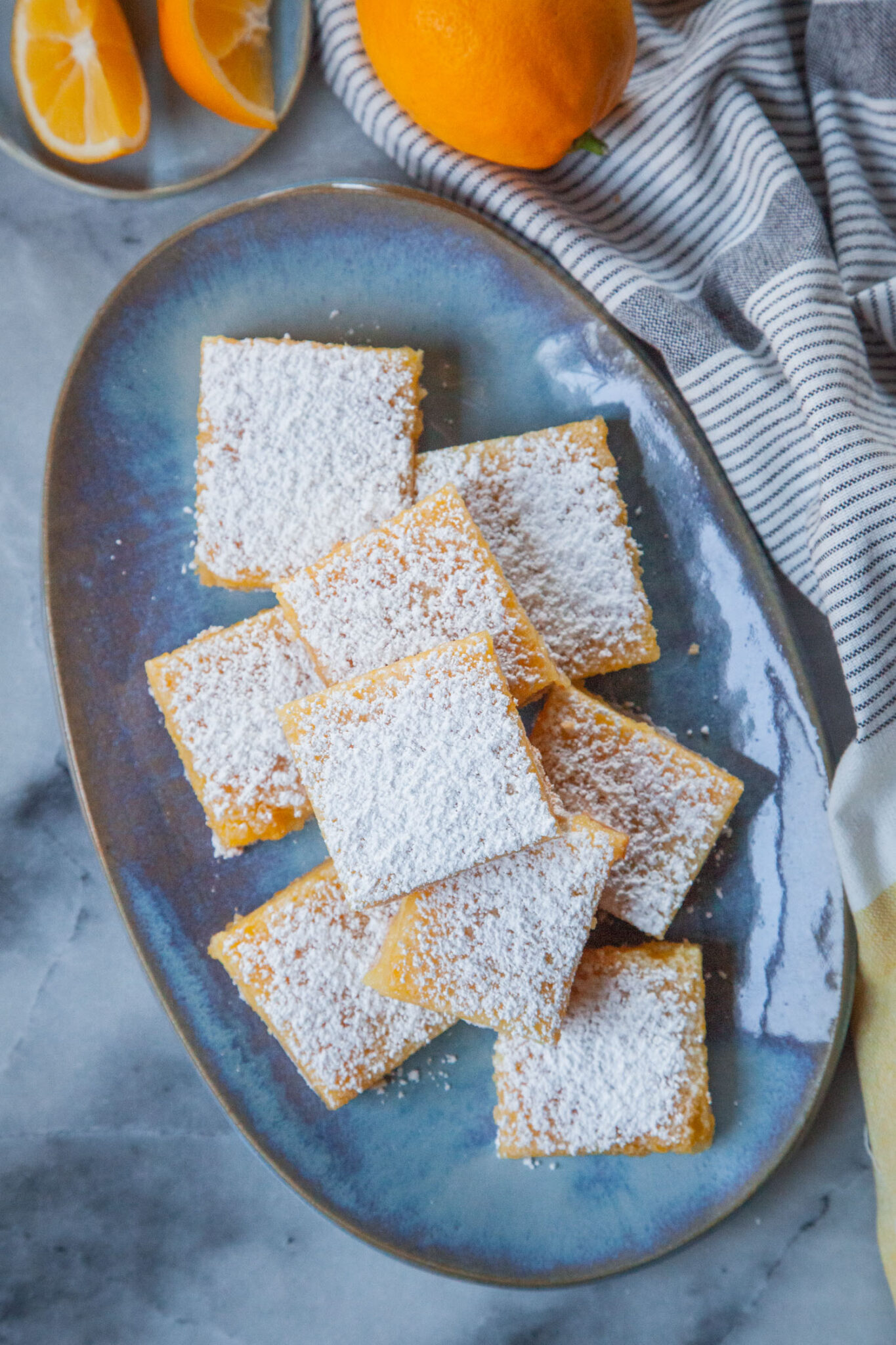
Storage
Store these lemon bars in the refrigerator for up to 5 days in an airtight container. Keep in mind that the powdered sugar on top will dissolve when you store them, so if you plan on serving them at a later date, dust the top with powdered sugar right before serving.
If you like these Meyer Lemon Bars, check out these other citrus recipes:
- Grilled Pineapple Upside Down Lime Scented Cake
- Rhubarb Meyer Lemon Bundt Cake
- Sparkling Strawberry Lemonade
- Cinnamon Orange Pull-Apart Bread
- Blueberry Muffins with Blood Oranges
- Dark Chocolate Chip Orange Olive Oil Ice Cream
- Lemon Lime Bars with Pistachio and Bisquick Crust
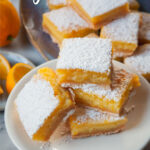
Meyer Lemon Bars
Ingredients
Crust
- 1 1/2 cup all-purpose flour 210 g
- 1/2 cup confectioner’s sugar (powdered sugar), sifted 57 g
- 3/4 cup unsalted butter, at room temperature 1 1/2 sticks or 170 g
- 1/4 teaspoon kosher salt
Filling
- 2 1/2 cups white sugar 500 g
- Zest from 5 Meyer lemons
- 1/2 cup all-purpose flour 70 g
- 1 1/4 cup Meyer lemon juice about 5 large to 6 medium Meyer lemons
- 8 large eggs
- 1/4 teaspoon kosher salt
To finish
- Additional confectioner’s sugar powdered sugar
Instructions
-
Preheat the oven to 350°F. Spray a 9 x 13 x 2-inch baking pan with cooking oil, then place a piece of parchment paper into the pan, making sure there is some paper hanging over the edges.
Place the flour, confectioner’s sugar, butter and salt into the bowl of a stand mixer fitted with a paddle attachment. Pulse the mixer on and off, until the butter starts to break down and dry ingredients aren’t flying up from the bowl. Continue to mix the ingredients together, increasing the speed from low to medium, until a dough forms.
The mixture might seem really dry at first, depending on how cold your butter initially is. But keep on mixing, and a dough will form eventually.
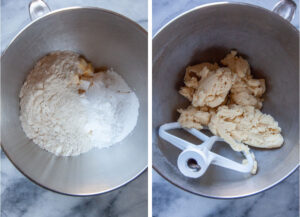
-
Take pieces of the dough and press the into the bottom of the pan. You want a fairly thin 1/4-inch to 1/2-inch thick crust. Press the dough, cobbling it together until you have covered the entire bottom of the pan.
It may seem like you don’t have enough dough, but press the dough thinner and it should cover the entire bottom of the pan.
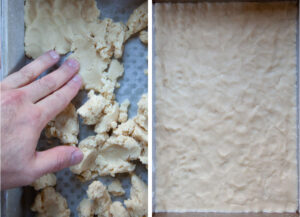
-
Prick the crust all over with a fork, then place a piece of parchment paper over the crust and pour pie weights, dry beans or uncooked rice onto the paper. Bake for 25 minutes, then remove the pan from the oven, carefully lift up the paper with the weights on it, and move it to a heatproof bowl.
Place the crust back in the oven, and bake an additional 5 minutes, or until the top of the crust is golden brown.
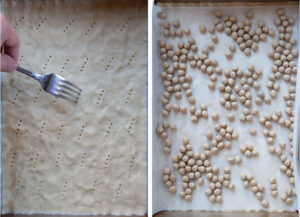
-
While the crust is baking, make the filling by placing the sugar and lemon zest in the bowl of a food processor. Process until the zest is evenly distributed into the sugar.

-
In a glass bowl, add the eggs and salt. Whisk to break up the eggs, then pour in the lemon sugar along with the flour and lemon juice. Continue whisking until combined.
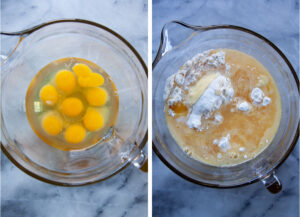
-
Once the crust is done baking, pull the pan out of the oven, pour the filling onto the hot crust, then place the pan back in the oven. Reduce the oven to 300°F. Bake for 30 to 40 minutes or until the center of the pan no longer jiggles when you shake it.
Remove from the pan from the oven and let cool to room temperature, about an hour, then cover and refrigerate for 2 hours or overnight.
To cut the bars, lift the parchment paper up from the pan with the bars inside and move it to a cutting board. Cut with a warm damp sharp knife. See my note above for how to cleanly cut lemon bars.
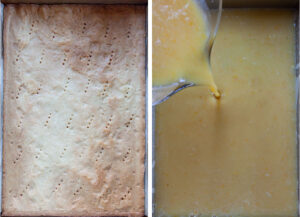
Notes
Nutrition
Pin this recipe for later!

The post Meyer Lemon Bars appeared first on Eat The Love.




